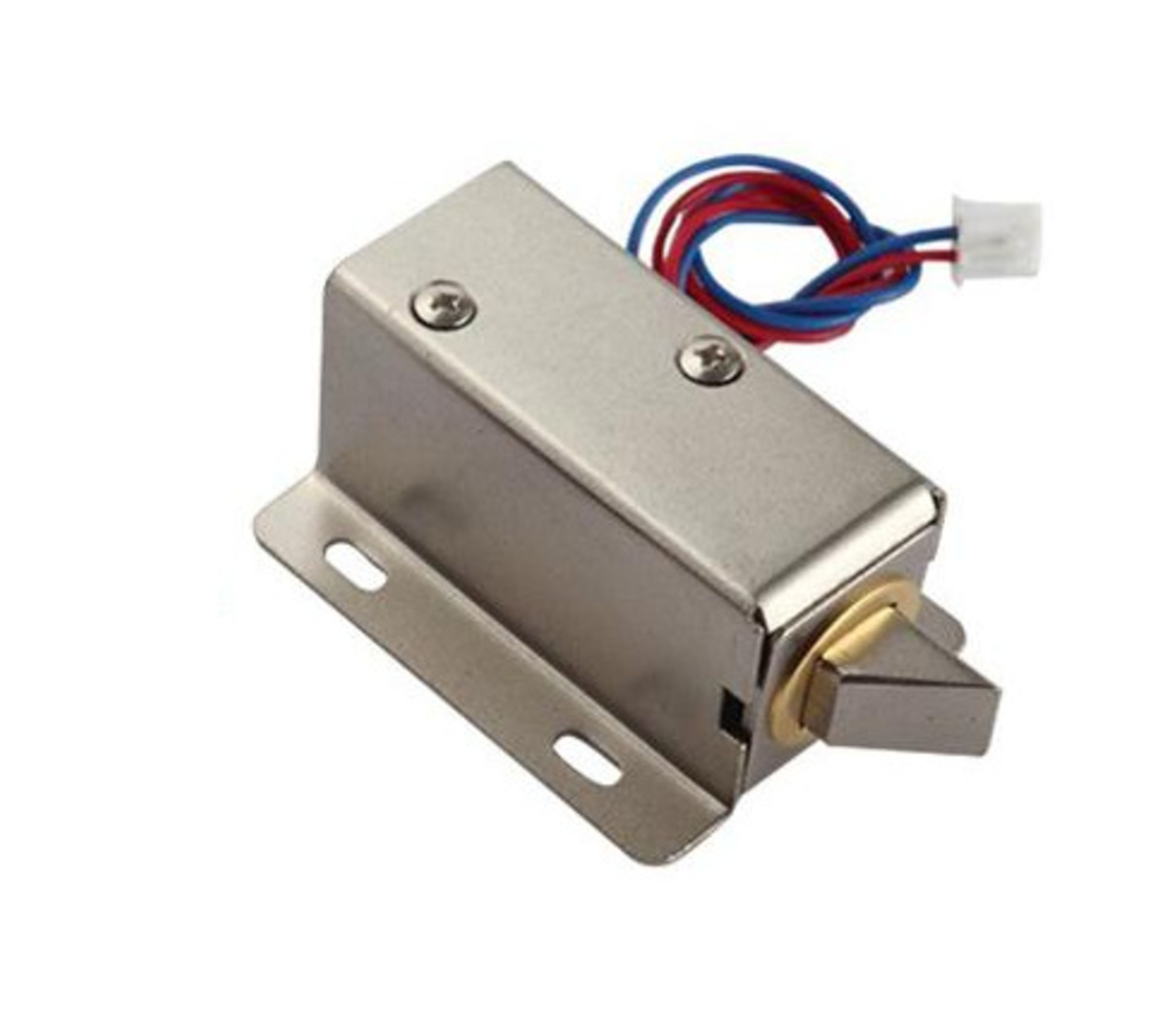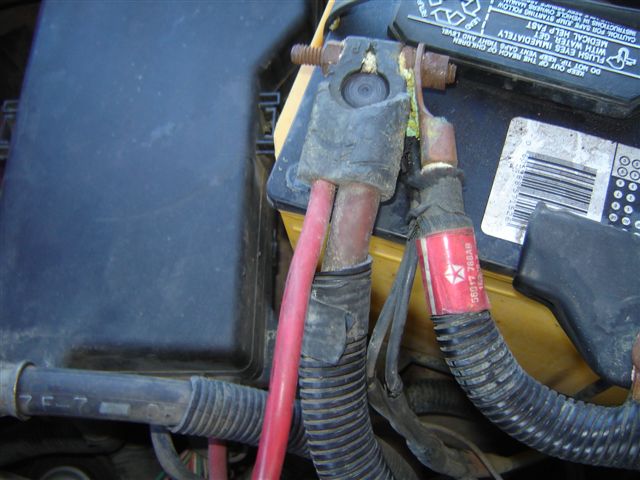Solenoid Slot
A solenoid door lock is a remote door locking mechanism that latches or opens by means of an electromagnetic solenoid. In most cases, the actual locking mechanism of a solenoid door lock will be identical to a conventional key-operated example. The only difference between the two is the inclusion of a low-voltage solenoid in the mechanism, which pulls the latch back into the door when a push button or other controller is activated. The latch will then be retained in the door for as long as the button is pushed, or, in the case of a latching solenoid, indefinitely until the button or controller is activated again. These types of door locks are used extensively in remote security access and automotive doors.
- Guardian pulling solenoid. 1-3/16' x 1.22' (including terminals). 2-1/2'L with plunger nested, 3/4' plunger travel. Frame has 6-32 tapped holes. 0.312'D x 2'L plunger with 1/8'W x 3/8' deep slot. $15 each - $13 (6+), $11.50 (25+).
- Het slot is altijd door middel van een cilinder mechanisch te openen. Enkelzijdig gecontroleerd In geval van eventuele nood- of panieksituaties is de deur te allen tijde van binnenuit te bedienen met de deurkruk en voldoet aan de normen EN 179 en EN 1125 voor de nood- en paniekdeur oplossingen.
A solenoid is a coil of wire that becomes magnetized when an electric current passes through it. Solenoids often have a hole in their center and a protruding metal rod that is pushed or pulled by magnetism when power is applied. A solenoid valve uses a solenoid to actuate the valve.
Most door locks work in one or two basic ways. In the case of access doors in buildings, a latch or pins in the lock mechanism located in the door leaf are pushed into a hollow compartment or socket in the frame, thereby preventing the door from being opened. A fairly simple cam arrangement allows the latch to be withdrawn and retained in the lock mechanism when the door is unlocked. Car door locks usually function in a slightly different manner and feature a slotted cam which locks over a latching bar on the car body. An arrangement of levers and linkages is used to lift the cam and open or lock the mechanism.
The solenoid door lock, on the other hand, makes use of a static wire wound coil and a moving armature or plunger to perform the work of the key and linkages in conventional locks. The coil is wired into a circuit, which will include a low-voltage, direct-current (DC) power source, and at least one control input such as a push button. When the control is activated, electric current flows to the coil, energizing and creating a strong magnetic field around it. This magnetic field attracts the armature or plunger, causing it to move rapidly towards the coil. The locking mechanism latch or cam is attached to the armature or plunger via an actuator arm and is consequently pulled out of the locking position.
In the case of some security access doors, the solenoid door lock will remain active for a couple of seconds courtesy of a built-in delay circuit allowing time for the door to be opened. It may also be kept active by an operator holding down the control button until the door is opened. When the power is cut to the solenoid, the latch resets and the door locks again when closed. Where the lock is meant to stay open for protracted periods, a latching solenoid may be used. These solenoids include a set of permanent magnets at the rear of the coil which hold the plunger in place, allowing power to be cut to the solenoid door lock coil, preventing overheating and unnecessary power drain.
Solenoid Coin Slot
A solenoid door lock is a remote door locking mechanism that latches or opens by means of an electromagnetic solenoid. In most cases, the actual locking mechanism of a solenoid door lock will be identical to a conventional key-operated example. The only difference between the two is the inclusion of a low-voltage solenoid in the mechanism, which pulls the latch back into the door when a push button or other controller is activated. The latch will then be retained in the door for as long as the button is pushed, or, in the case of a latching solenoid, indefinitely until the button or controller is activated again. These types of door locks are used extensively in remote security access and automotive doors.


Most door locks work in one or two basic ways. In the case of access doors in buildings, a latch or pins in the lock mechanism located in the door leaf are pushed into a hollow compartment or socket in the frame, thereby preventing the door from being opened. A fairly simple cam arrangement allows the latch to be withdrawn and retained in the lock mechanism when the door is unlocked. Car door locks usually function in a slightly different manner and feature a slotted cam which locks over a latching bar on the car body. An arrangement of levers and linkages is used to lift the cam and open or lock the mechanism.

Solenoid Solution Valve
The solenoid door lock, on the other hand, makes use of a static wire wound coil and a moving armature or plunger to perform the work of the key and linkages in conventional locks. The coil is wired into a circuit, which will include a low-voltage, direct-current (DC) power source, and at least one control input such as a push button. When the control is activated, electric current flows to the coil, energizing and creating a strong magnetic field around it. This magnetic field attracts the armature or plunger, causing it to move rapidly towards the coil. The locking mechanism latch or cam is attached to the armature or plunger via an actuator arm and is consequently pulled out of the locking position.
In the case of some security access doors, the solenoid door lock will remain active for a couple of seconds courtesy of a built-in delay circuit allowing time for the door to be opened. It may also be kept active by an operator holding down the control button until the door is opened. When the power is cut to the solenoid, the latch resets and the door locks again when closed. Where the lock is meant to stay open for protracted periods, a latching solenoid may be used. These solenoids include a set of permanent magnets at the rear of the coil which hold the plunger in place, allowing power to be cut to the solenoid door lock coil, preventing overheating and unnecessary power drain.